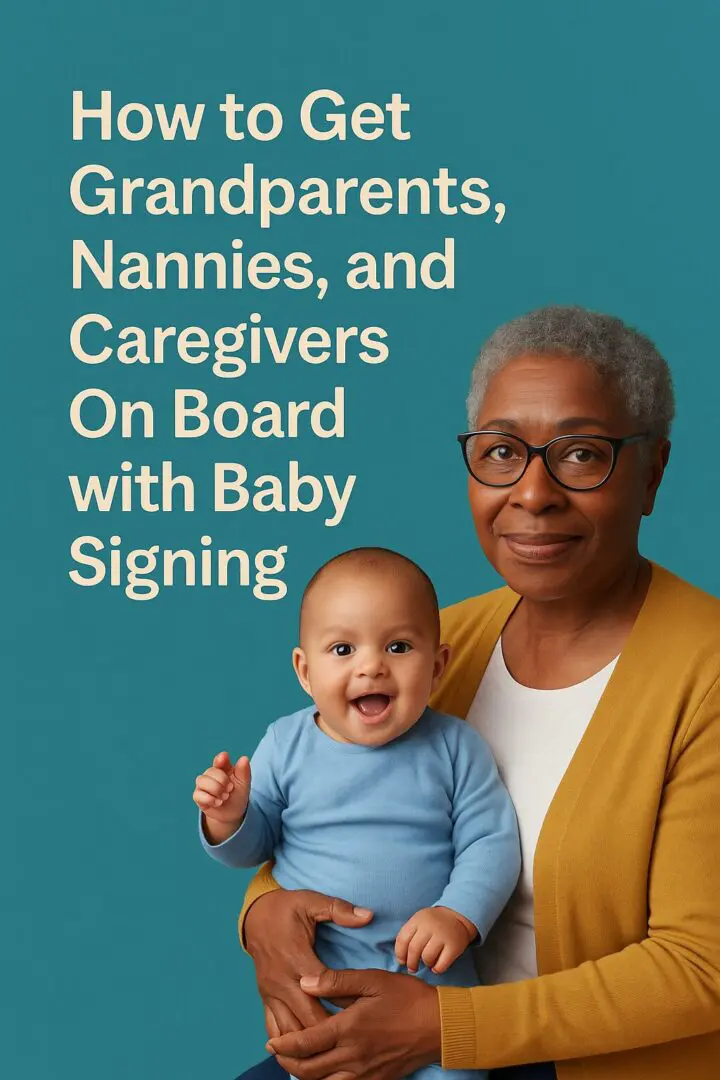
How to Get Grandparents, Nannies, and Caregivers On Board with Baby Signing
When you’re teaching your baby to sign, it’s important that the people around them are also on the same page. That includes grandparents, nannies, daycare staff, and babysitters. But what if your child’s caregivers don’t know baby signs—or don’t see the value in learning them?
Don’t worry! With a little encouragement and a few helpful strategies, you can make baby sign language a team effort.
Why Consistency Matters
Babies learn through repetition and routine. When everyone in their world uses the same signs for the same things—like "milk," "more," or "all done"—they learn faster and feel more confident.
If your baby signs "eat" but grandma doesn’t recognize it, communication can break down. That’s why it’s so helpful to involve all caregivers from the beginning.
Start with the Basics
See It in Action: The Sign for MILK
Here’s a quick clip showing how to teach the sign for “milk.” It’s one of the most common and useful signs to start with:
📺 Watch the MILK sign video on YouTube
You don’t need to overwhelm caregivers with 100 signs. Start with 5–10 of the most useful signs for daily life, such as:
- Milk
- Eat
- More
- All done
- Sleep
- Mommy / Daddy
Print out a simple chart, send a quick video, or even demonstrate them in person. Most signs are intuitive and easy to learn.
Keep It Simple and Encouraging
Let caregivers know that they don’t need to be fluent in sign language—just familiar with a few key signs. Remind them that baby signs aren’t meant to replace speech, but to support communication before words develop.
Here are some ways to encourage caregivers:
- Share a quick video or printable chart with the signs your baby is learning.
- Invite them to observe a Baby Signs® class or watch a demo video together.
- Keep the tone positive—emphasize how helpful signs are in understanding your baby’s needs.
Address Resistance with Empathy
Sometimes caregivers may be unsure or hesitant. They might think, “Isn’t this confusing?” or “Won’t this delay talking?”
Reassure them:
- Signing supports, not delays, speech.
- It reduces frustration and tantrums.
- It helps caregivers feel more connected and in tune with the baby.
Share your own experiences or stories from other families who’ve seen the benefits.
Make It a Team Effort
Encourage everyone to celebrate signs together! When a caregiver responds to a sign with enthusiasm, the baby gets positive reinforcement—and the caregiver gets a confidence boost too.
You can even place small reminder cards near the highchair, crib, or diaper area to help everyone stay consistent.
Helpful Resource for Caregivers
Need an easy way to share signs with grandparents, babysitters, or daycare staff?
The Baby Signs® Quick Reference Guide is a simple, durable chart that shows the most useful signs for daily routines—perfect for hanging on the fridge or keeping in a diaper bag.
👉 Check out the Quick Reference Guide here
It’s a great tool for helping everyone stay consistent—and confident—when signing with your baby.
Final Thoughts
Baby sign language works best when everyone’s involved. With just a little effort, your baby’s caregivers can become enthusiastic signing partners.
So whether it’s grandma at the dinner table, the nanny at story time, or a daycare teacher during snack, bringing everyone on board makes signing even more powerful—and joyful—for your baby.
Want to help your baby’s caregivers get started? Find a Baby Signs® class near you: https://babysigns.com/find-a-class
Explore more baby signing resources at BabySigns.com and help every caregiver become part of your child’s communication journey.

